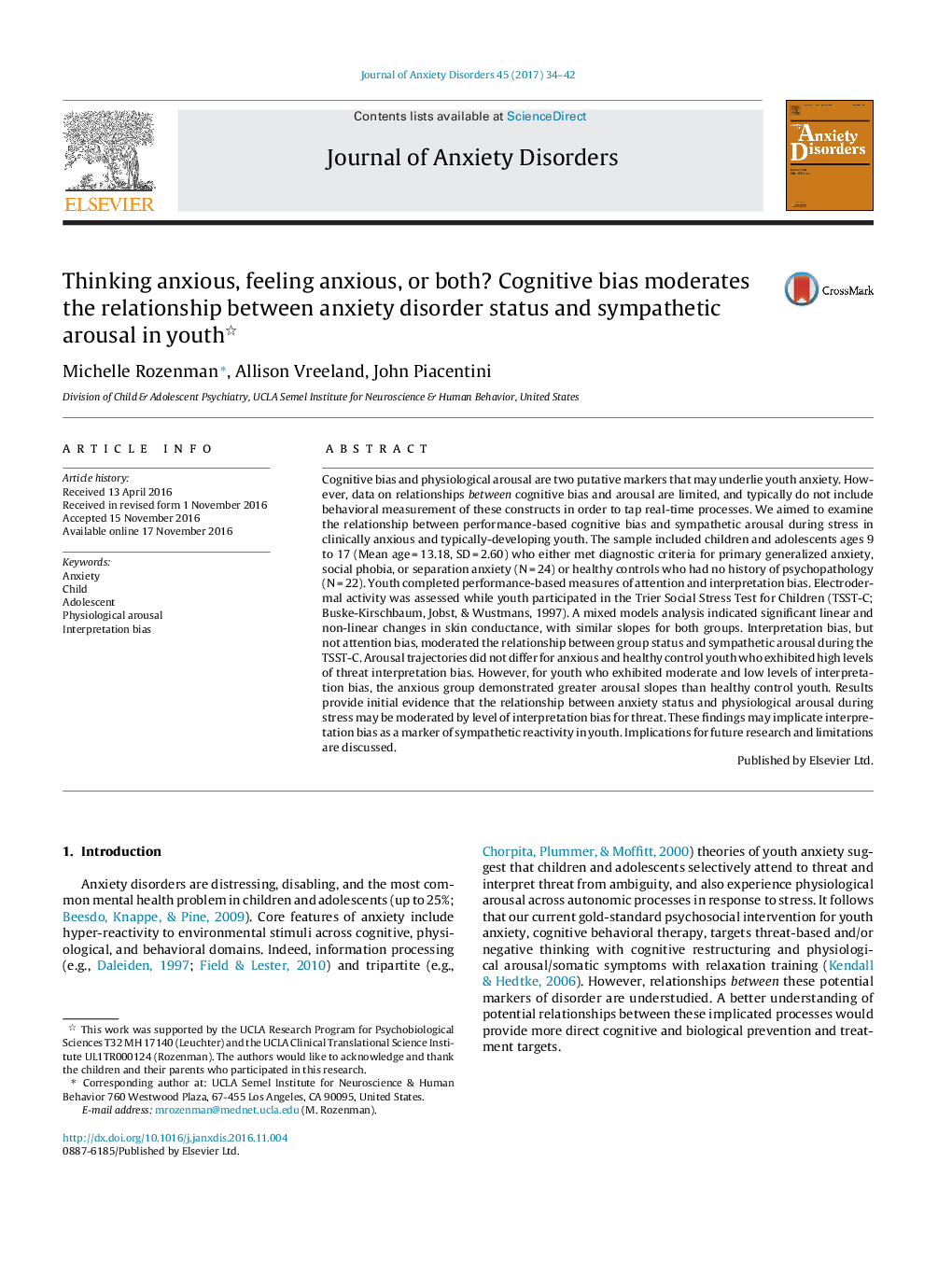| کد مقاله | کد نشریه | سال انتشار | مقاله انگلیسی | نسخه تمام متن |
|---|---|---|---|---|
| 5038936 | 1473033 | 2017 | 9 صفحه PDF | دانلود رایگان |
- Cognitive bias and physiological arousal have each been linked to anxiety.
- Youth cognitive bias moderates the relationship between anxiety and arousal.
- Anxious and healthy youth do not differ in arousal when they have high threat interpretation bias.
- Anxious youth demonstrate greater arousal than healthy youth at moderate and low levels of interpretation bias.
- Threat interpretation bias may be a marker of physiological arousal.
Cognitive bias and physiological arousal are two putative markers that may underlie youth anxiety. However, data on relationships between cognitive bias and arousal are limited, and typically do not include behavioral measurement of these constructs in order to tap real-time processes. We aimed to examine the relationship between performance-based cognitive bias and sympathetic arousal during stress in clinically anxious and typically-developing youth. The sample included children and adolescents ages 9 to 17 (Mean age = 13.18, SD = 2.60) who either met diagnostic criteria for primary generalized anxiety, social phobia, or separation anxiety (N = 24) or healthy controls who had no history of psychopathology (N = 22). Youth completed performance-based measures of attention and interpretation bias. Electrodermal activity was assessed while youth participated in the Trier Social Stress Test for Children (TSST-C; Buske-Kirschbaum, Jobst, & Wustmans, 1997). A mixed models analysis indicated significant linear and non-linear changes in skin conductance, with similar slopes for both groups. Interpretation bias, but not attention bias, moderated the relationship between group status and sympathetic arousal during the TSST-C. Arousal trajectories did not differ for anxious and healthy control youth who exhibited high levels of threat interpretation bias. However, for youth who exhibited moderate and low levels of interpretation bias, the anxious group demonstrated greater arousal slopes than healthy control youth. Results provide initial evidence that the relationship between anxiety status and physiological arousal during stress may be moderated by level of interpretation bias for threat. These findings may implicate interpretation bias as a marker of sympathetic reactivity in youth. Implications for future research and limitations are discussed.
Journal: Journal of Anxiety Disorders - Volume 45, January 2017, Pages 34-42
